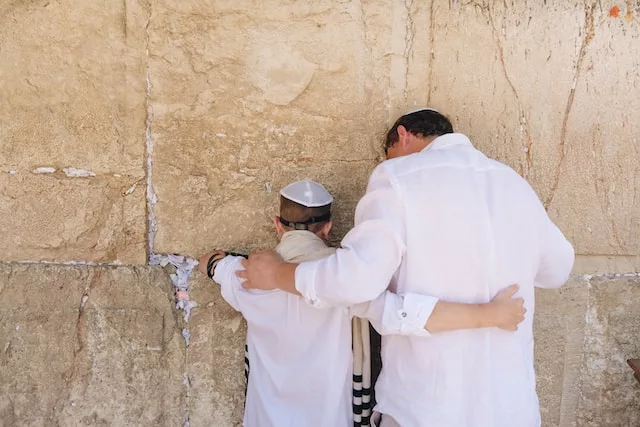Judaism values the importance of sacred spaces as vital in fostering a deep connection with the divine. In this blog post, we will discuss traditional sacred spaces. Sanctuaries, ranging from synagogues to historical landmarks serve as spiritual hubs for worship, study, and communal gathering. We will explore the significance and diversity of sacred spaces within the Jewish tradition.
The Synagogue: A House of Prayer
The heart of Jewish communal life is the synagogue, in Hebrew “beit knesset” or “beit tefillah.” This very sacred space is used for prayer, study, and community engagement. As a place of worship, the synagogue provides Jews with a space to come together, pray, and share spiritual experiences.
Within the walls of the synagogue, the Torah scrolls are kept in the Ark, a central point in the heart of the synagogue that symbolizes the Ark where the tablets God gave to Moses were kept. It also represents the Holy of Holies, which was located in the ancient Temple of Jerusalem. The Ark is the holiest place and the center of prayer in the synagogue. A synagogue also provides an opportunity for Torah study, where people deepen their understanding of Jewish teachings and connect with each other through learning. In addition, these places foster community and provide opportunities for social interactions, life-cycle events, and celebrations.
The Western Wall A Symbol of Resilience
Located in Jerusalem’s Old City, the Western Wall, also known as the Kotel, holds immense spiritual significance for Jewish people worldwide. It is the last remaining structure of the Second Temple and serves as a place of prayer and pilgrimage. The Western Wall’s weathered stones have witnessed generations of worshipers from across the globe. Each offering prayers hopes, and dreams they’ve written on papers and tucked into its crevices. Jews from diverse backgrounds gather at this sacred site to pour out their hearts and seek divine guidance, and connection. The Kotel stands as a symbol of Jewish resilience, unity, and a steadfast bond with God and the land of Israel.
Holy Grave Sites
Visiting the grave site of biblical figures and prominent rabbis is another common practice that evokes a feeling of sacredness. Their resting places in Israel and around the world have become a site for pilgrimage that attracts thousands of people each year. These sacred sites give visitors a feeling of connection with the person and their contribution to Judaism. Rabbi Shimon’s grave site in Northern Israel is a perfect example with 50,000 visitors on Lag B’Omer. A similar number visit Rabbi Nachman’s grave in Uman during the High Holidays. Much like a synagogue when enclosed, the grave site may be used for prayer, Torah study, and community gatherings.
Home: A Domestic Sanctuary
In Judaism, the home is a central focus of religion, a sacred space unto itself. As a mini-temple, the home is a microcosm of Jewish values where families can nurture, grow and celebrate their Jewish connection. A space where people can carry out their daily obligations and personal goals while cultivating a deep connection to their faith. In their homes, Jewish families pass on their traditions from one generation to the next.
Sacred spaces in Judaism provide multiple opportunities for spiritual connection and growth. They’re of great importance in Judaism and serve as gateways for divine connection, communal gathering, and spiritual growth. Whether in the synagogue, at the Wailing Wall, or in one’s own home, these sanctuaries provide space for worship, study, and comfort in faith. Using these sacred places allows people to deepen their relationship with God and strengthen their connection to the Jewish community.
Photo credit: Anton Mislawsky









